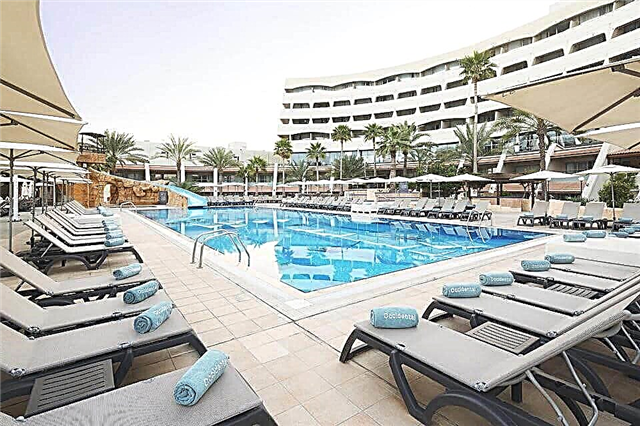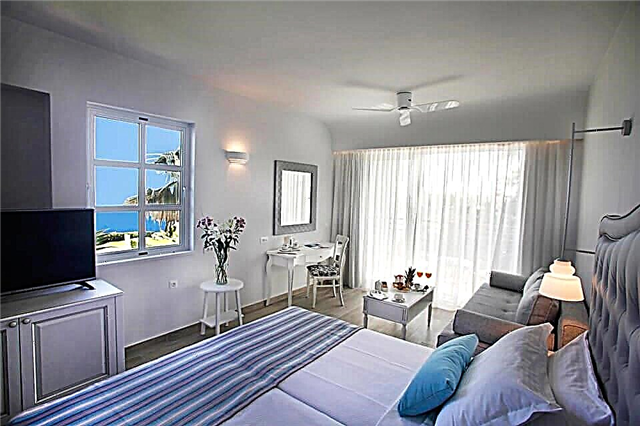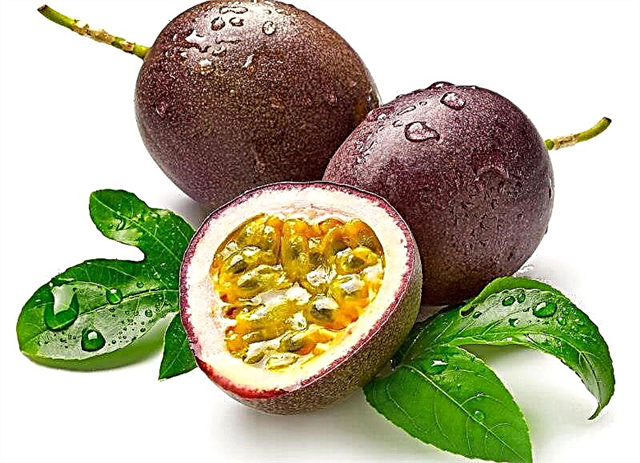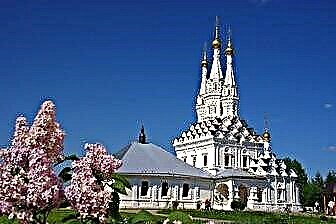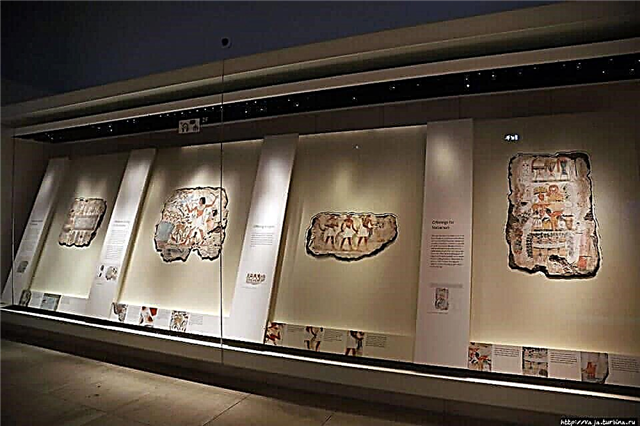Every tourist who has visited the capital of Great Britain must visit the British Museum in London. This place is included in the program of all city tours: and it is not surprising, because the funds contain the richest collection of objects. The visitor will surely find something new, unexpected and interesting for himself.
History of creation

The museum began with three private collections, which were donated to the newly created (by decree of the British Parliament in 1753):
- Hans Sloan was fond of natural sciences. He collected many items that he found amusing. When the collection grew huge, the president of the Royal Society of Science offered it as a donation to the museum. And now this is an invaluable part of the exhibition.
- Another collector, Robert Cotton, enthusiastically collected old manuscripts and books. He also donated his finds to the new museum. It is now the backbone of the British Library.
- A friend of Pope and Swift, Robert Harley, Earl of Oxford, also could not pass by old books and manuscripts. And his collection perfectly complemented the already established funds.
The first visitors were able to view the exhibition in 1759. The Montague Palace in Bloomsberry has been allocated for the new cultural site. But the funds were constantly replenished, and in 1823, by decision of Parliament, the Montague Palace was demolished and a new, more spacious building began to be built. In 1847, the palace was opened, which was built by Robert Smerk. The complex is designed in the tradition of classicism. A distinctive feature of the modern museum is a light glass dome crowning heavy stone columns. This detail appeared in 2000 by Norman Foster.

Interestingly, the first temporary restoration workshop at the museum was established in 1918. Then part of the exhibits returned from the evacuation damaged. It took urgent action. And since 1931, the workshops began to work constantly. Today's visitors can view the Greville mineral collection, antique vases purchased from Hamilton, finds made in the Parthenon by Lord Elgin and sold by him to the museum.
Exposure

The exposition of the museum was constantly replenished with new items. And, unfortunately, not all of them came to the funds in a legal way. Some researchers believe that the stages of development of the British Museum reflect the predatory position of England as a colonizer.
Department of Ancient Egypt and Sudan

This department ranks 2nd among the world's collections in terms of the completeness of the exposition. In the first place, naturally, is the Cairo Museum. But the main place for studying Egypt is still the British Museum. This is not surprising: the exposition covers all stages of the country's development, starting from the 10th century BC. The collection is based on a donation from Hans Sloan: he donated 160 authentic items.
Later, the exposition was replenished from the following sources:

- British troops defeated Napoleon's army in Egypt in 1801. The collection of antiquities collected by the dictator was seized, including the Rosetta Stone. These items became spoils of war and entered the British Museum.
- Then the rate of replenishment of the exposition slowed down: until the end of the 19th century, antiquity had to be bought or taken as a gift from private collectors.
- At the beginning of the twentieth century, the British Egyptian Research Foundation began to work actively. In Africa, excavations were carried out, the objects found were immediately transported to England and entered the museum. This did not require the consent of the local authorities. The result was a rapid growth of funds: by 1924, the collection numbered 57,000 items.
- At the end of the twentieth century, the Egyptian government imposed a ban on the export of antiquities outside the state, the growth rate of the British Museum's exposition slowed down again. But by this time, the volume of the collection was 110,000 items.

Most of the exhibits are in storerooms: visitors can see only 4% of the total. The exhibit occupies 7 permanent galleries. Among them, the fourth is the most popular.
It is in gallery number 4 that tourists are invited to look at:
- Amarna Archives. It is represented by 95 clay tablets, which reflect the correspondence of the pharaohs of Egypt and Syria. Age of exhibits: approximately 1350 BC
- Palette with a battle. The stone tablet depicts battle scenes of famous battles, supplemented with text in the form of pictograms. The age of the tablet: the end of the 4th millennium BC.
- Rosetta stone. But he was knocked out by the decree of Tsar Ptolemy. But what is interesting is that the text is written in three different ways: Egyptian cursive (demotic), cuneiform, and ancient Greek.
The number of mummies and ancient coffins on display is 140. This is slightly less than the similar exposition of the museum in Cairo.
Department of Greece and Rome

This is the second most important department of the British Museum. But the area allocated for the exhibits is four times that of the Egypt and Syria department. The number of collected items exceeds 100,000 units. The exhibition allows you to get acquainted with the history of Crete, Athens, Mycenae, Athens, Lycia, Ephesus and Cyprus, to trace all the stages of the development of the Holy Roman Empire. The museum's ownership of some of the items is controversial: Greece is making demands for the return of the unique Elgin marbles.

There is no systematic view of the treasure. In order to add up the full image of the countries, there are few items on display. But they are still enough to understand how people of the early periods lived:
- The exhibition begins with a showcase dedicated to the Etruscans. And this is not surprising: the customs of the pre-Roman tribes were brought into life by people of subsequent historical periods. Chariot racing, the favorite pastime of the Greeks and Romans, is taken from the life of the Etruscans. The same can be said for funeral rites. This part of the exposition ranks second in terms of saturation after the Italian one.
- The centerpiece of the exposition is the tableware. The material used for its manufacture is different: bronze, glass, clay. The vessels are decorated with scenes of battles, portraits of heroes and images of gods.
- It is interesting to consider the objects that people used in housekeeping. Richly decorated oil lamps, candle holders, combs, hairpins for the hairstyles of ancient beauties make you stand in front of the shop windows for a long time.
- The number of statues of different sizes is striking. They are made of baked clay, marble, bronze.
- The stand dedicated to ancient physicians is also of interest. Shown here are the items that were used to perform simple surgical operations. And so that the physician does not forget any important organs, the figures of a person in a section are presented next to them.
- Decorations made of precious metals are exhibited separately. Modern jewelers cannot repeat some techniques of working with gold.
The pearl of the collection are fragments of the wonders of the world: the Temple of Artemis in Ephesus and the Mausoleum of Halicarnassus.
Middle East Division

The first exhibits entered the museum in 1772. And today's funds are more than 330,000 of the most valuable items. The largest number of exhibits were transferred to the storage in the 19th century, when large-scale excavations began on the territory of modern Iran. The department has objects of the cultures of Persia, Anatolia, Arabia, the Caucasus, Phenicia, Palestine, Mesopotamia, Syria, Persia, Arabia.
The subsections where the following are presented are especially valuable:
- Fragments of the ruins of the palaces of Mesopotamia, archives of the kings of Assyria, bas-reliefs of the kings of Esarhaddon, Ashurnazirpal 2, Adad-Nirari 3, Tiglatpalasar 3.
- Islamic art collection. It consists of over 40,000 items. Here are: tiles, ceramics, shamail, glass products, personal seals of noble persons.
- Items found on the territory of the former Achaemenid Empire. This is the famous Amudarya (or Oka) treasure. Basically, it consists of 180 pieces of silver and gold.
- Library of King Ashurpanibal. It consists of 22,000 clay pages, inscribed in cuneiform. An interesting tablet describes the Flood. This is part of the story of Gilgamesh.
- Sumerian collection. These exhibits were found at the site of the city of Ur. Among them are the oldest set for a board game (the age of the exhibit is 2600 BC) and the oldest stringed musical instrument (it dates back to 2500 BC). Interesting are two panels made of wood, conventionally named "Standard of War and Peace". They depict battle scenes mixed with peaceful paintings.
The permanent exhibition is presented in 13 galleries. But tourists can view only 4,500 exhibits from all available in the storerooms.
Central Park Hotel
London
Located less than 100 meters from Hyde Park

Hotel Edward Paddington
London
Minutes from Paddington Station and Hyde Park

DoubleTree by Hilton London - Docklands Riverside
London
Located on the embankment of the Thames

Park Plaza County Hall London
London
Just minutes from the banks of the Thames and the London Eye

Department of Ancient History and Europe

This section displays finds that were used by prehistoric man. The periods of the Stone Age, Mesolithic, Paleolithic are covered. The collection of artifacts from the early Middle Ages is the largest in the world.
Subdivisions can be conditionally distinguished by time intervals:
- Prehistoric. It covers the period from the 10th millennium BC. (figurine of lovers from Bethlehem) and up to 100 BC. (treasure of silver items from Cordoba). This stand presents jewelry, household items, dishes.
- Roman period in Britain. There are exhibits from the 1st to 4th centuries AD. It is interesting to look at the Lycurgus Cup, the glass of which changes color from red to green when the angle of incidence of light rays changes. There are wooden plaques, where the text is written by hand, a lot of jewelry made of gold and silver.
- The period of the early Middle Ages. The exhibits date back to the 6-8 centuries. Basically, weapons are represented here. Items that were used in the burials of rich people, jewelry made of precious metals are on display. It is worth paying attention to Franks's casket: a casket made in the 8th century from the bone of a whale. It is decorated with elaborate carvings.
- Middle Ages. The most extensive subdivision. There are objects belonging to the ministers of the church (Kells 'staff), utensils (the Cup of St. Agnes, the exhibit dates back to the 14th century), a golden cancer for the Savior's crown of thorns, leisure items (Lewis' bone chess, dated to the 12th century), triptychs made of elephant bones.

It is noteworthy that the items on display are in excellent condition.
Coca-Cola London Eye Ticket - £ 24.30
Tower of London and Royal Treasure Exhibition Ticket - £ 26.80
Tower Bridge Ticket - £ 9.80
Westminster Abbey entrance ticket and audio guide - £ 20
Madame Tussauds ticket - £ 29
St Paul's Cathedral Fast Track Ticket - £ 16
Skyscraper "Shard" - entrance ticket and champagne - £ 24.95
Asia Division

This section contains finds from the Asian part of the world, except for Western Asia (this part of the collection is in the section of the Near East). The period under study is wide: from the Neolithic to the present. Tourists are introduced to all stages of human development through everyday objects. By the way, this section contains the largest collection of Japanese art in the West.

It is worth paying attention to:
- Buddhist paintings
- sculptures and bas-reliefs from India
- artifacts from China (drawings, porcelain, jade products, lacquer miniatures, bronze products)
- treasure from Indonesia (silver sculptures, gold statues found near the city of Sambas)
- Buddhist vases and Buddha statue from China
- figure of Tara found in Sri Lanka
It is noteworthy that the most common utensils are inlaid with precious and semi-precious stones.
Department of Africa, Oceania and the Americas

The main exhibits were found and presented by William Oldman, Henry Christie, Harry Beasley. They donated unique treasures to the museum. But other collectors also donated or donated valuable items to the museum. The collection of artifacts continues today. The modern collection consists of 350,000 exhibits that provide a more complete picture of the life of the people of Oceania, Africa and the Americas. Some items are more than 2,000,000 years old. The exhibition occupies several galleries.
The centerpiece of the exhibition is the collection dedicated to the Americas. Basically, these are artifacts dating back to the 19th and 20th centuries. But some of the items belong to ancient times and are associated with the life of the Mayans, Aztecs, Incas. It is interesting to look at the collection of Mayan door lintels, products from aztec turquoise found in the territory of modern Mexico.

Central Africa is represented by an excellent collection of weapons and well-preserved textiles. Bronze busts found on the territory of Benin, a brass head of the Yorube king, a collection of gold jewelry are especially valuable items on display. Unique statues of Zemi have been discovered on the territory of modern Jamaica. They are presented in the Oceania subsection.
Department of coins and medals

This is one of the largest departments of the museum. Its size is approximately 1,000,000 items. But, unfortunately, only 9000 are presented for inspection in gallery # 68, and the rest are scattered in other places.
Having examined the exposition, visitors will be able to answer for themselves the main questions related to money and their circulation:
- Where did they first start minting coins and printing the first banknotes? Which region can boast of having the world's first mint?
- What is money? Has their meaning changed from the time of the beginning of conversion to the present day?
- What are the functions of money? How did the politicians of the past use money? Is money equally important today?
- What techniques have been and are being used by counterfeiters? Why are fake signs dangerous for the state? How are they tracked down and taken out of circulation?
- How, by examining coins, can you study the customs and mores of people living several centuries ago?
The Live Catalog service provided by the British Museum is very interesting. Any visitor can get it. This is a digitized catalog of M. Crawford, describing the coins of the Roman Republic in chronological order. Crawford described 12,000 coins, this is a serious scientific study. The administration of the museum believes that the catalog will help not only numismatists and students working on essays on the history of money, but also ordinary lovers of antiquities to study the life of people of the Roman period.
It is noteworthy that the catalog is constantly updated with data. The photographs of the coins are of high resolution and excellent quality. So far, the catalog is only available in English. True, work is underway on translations into other languages.
Department of prints and drawings

This department rivals in importance with the Uffizi Gallery, the Hermitage, the Albertina collection and the Louvre. The museum's treasury contains 2,000,000 prints, woodcuts and 50,000 drawings (of which 30,000 are by British artists). We are especially proud of:
- "Head of the Dead Christ" by Albrecht Durer.
- "A sheet with sketches of military vehicles" by Leonardo da Vinci. The author served the Duke of Sforza of Milan, developed military equipment at his request. But he himself was an opponent of wars, so in the center of the sheet he made an explanatory note that these machines would harm more those who use them than those against whom the technology is used.
- "Naked Man with Raised Hands" by Rafael Santi. This is a sketch for the large-scale work "The Ascension of Christ." In the figure, the author works not only on the position of individual parts of the body, but also on how the light will fall.
- Engraving on a copper plate, "The Knight, Death and the Devil" by Albrecht Durer. The author, with the help of the play of light and shadow, shows that on the path to light one will have to courageously overcome the darkness of the underworld.
- "Portrait of Andrea Quaratesi" by Michelangelo Buonarotti. The author argued that he painted portraits solely for love, and not out of a sense of duty. This drawing is a gift to a model or family.
- "Portrait of an Englishwoman" by Hans Holbein the Younger. The author managed to accurately convey the vulnerable soul of the model with the help of artistic techniques.
About 500,000 exhibits are presented in the museum's electronic database. Almost all of the posted illustrations are of high resolution.
Famous exhibits

Some of the items on display in the museum are of particular interest:
- Rosetta stone. It was the inscriptions embossed on it that became the key to deciphering the Egyptian letter. They helped Champollion make a discovery.
- Mummy of the priestess of Amon-Ra Katabet. The sarcophagus was originally made for the burial of a man. The strange thing is that all the organs of the high priestess are removed, and the brain is left.
- Fragments of sculptures of the Parthenon. This is a controversial artifact. In the 19th century, T. Elgin separated parts of the statues from the necropolis. Greece demands to return to her what was actually stolen.
- Polynesian statue of Hoa Hakananaya. She is considered a particularly valuable piece of the collection. The statue was brought from Easter Island. It was originally painted in red and terracotta colors. But now the paint has flown around, visitors can see the natural tuff.
- Fragment of the Great Sphinx's beard. This is again a controversial exhibit. It was dug up at Giza by Cavilla. Since the excavation was funded by the British government, the artifact was transferred to the museum.
- Sinai Codex of the Bible. In the 19th century, the Russian Empire bought the list from the monks of Sinai. But in 1933, the artifact was sold to the British government at the behest of Stalin. The transaction price is £ 100,000.
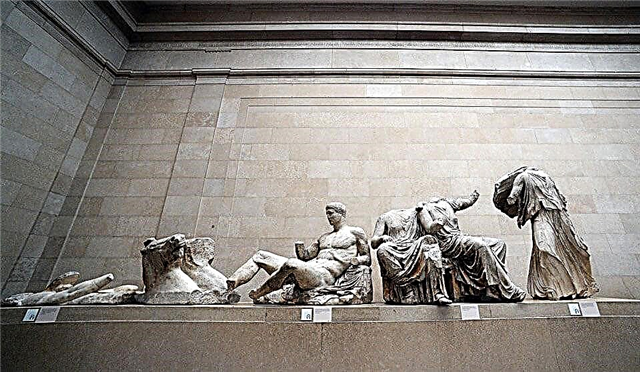
These artifacts are a must-see for museum visitors. But the rest of the exhibits are no less interesting.
Library

The year of birth of the British Museum library is considered 1753. It was then that Hans Sloan donated to the newly formed institution a collection of manuscript manuscripts. And the rarities were purchased from Cotton and Harley. Therefore, we can assume that the initial basis of the funds was made up of 3 private collections.
The initiative was taken up by George 2: he donated his personal library, which his ancestor, King of England Edward 4, began to collect. At the same time, George 2 issued an edict, according to which all English publishing houses were obliged to provide 1 copy of all books published in the country. This law is still valid today. The collections continued to grow: King George III in 1823 donated his personal collection of 65,000 books to the library. And already in 1850 the reading room opened its doors for visitors. At one time, V.I. Lenin and Karl Marx.
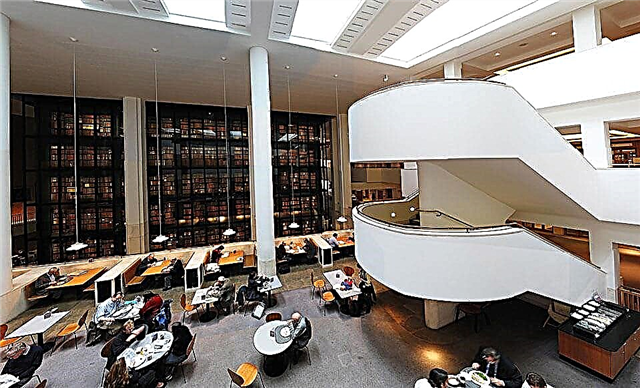
The twentieth century brought another valuable replenishment of funds: the Sinai Codex and manuscripts from the Buddhist monastery of Dunhuang. Currently, the library works with both full-time and correspondence visitors: it accepts orders from residents of other cities in Britain or citizens of other countries. Newspapers are presented in a separate division. His funds amount to 50,000 magazines and newspapers received from all over the world. Currently, the library funds have been digitized. Any citizen can enter the official website and find a source that interests him.
Opening hours and ticket prices
For visitors, the museum is open daily from 10 am to half past five in the evening. You will not have to pay for viewing the permanent exhibitions. But to visit temporary or thematic exhibitions, you will have to buy a ticket. Guided tours can be booked. The current prices should be inquired in advance on the official website of the museum. There are souvenir shops and coffee shops on site. There you can buy copies of artifacts and have a snack.
Where is it located and how to get there
Attraction address: London, Great Russell Street, WC1B 3DG. Tourists wishing to visit the British Museum can enter it through one of the entrances: the main Great Russell Street and the additional Montagu Place. There are 4 stations around the complex, the closest to the entrances are Tottenham Court Road and Holborn. It is convenient to get there by land transport: more than 20 bus routes pass by the museum, the most popular are: 7, 8, 19, 22b, 25, 38, 55, 98.
It is recommended to get to one of the following stops:
- New oxford street
- Tottenham Court Road
- Southampton Row
You can also come to the museum by bike: there are parking lots nearby.

